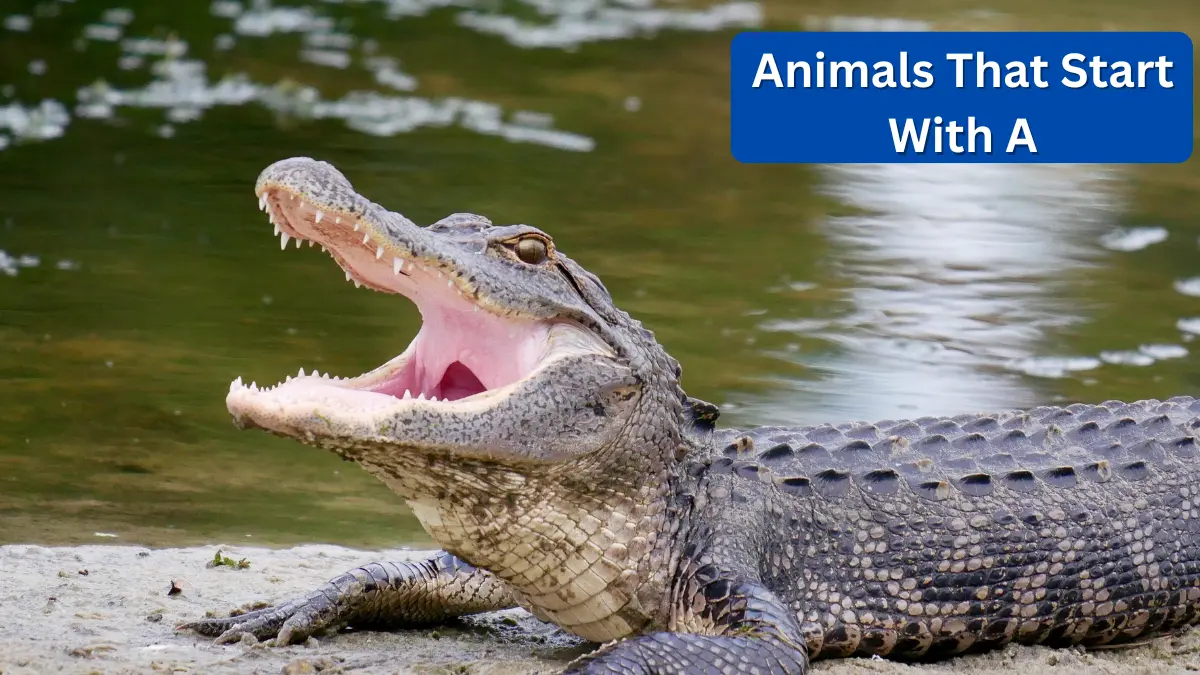The animal kingdom is vast and fascinating, filled with a diverse array of creatures. To explore this variety, let’s take a look at animals that start with the letter “A.” From the air to the land and deep seas, these animals showcase the beauty of biodiversity. Here’s a detailed list highlighting their unique characteristics, habitats, and behaviors.
Animals That Start With A
1. Aardvark
Aardvarks are medium-sized, nocturnal mammals native to Africa. Their name means “earth pig” in Afrikaans, which reflects their burrowing habits and pig-like snout.
- Habitat: Grasslands, savannas, and woodlands.
- Diet: Termites and ants, which they dig out with powerful claws and a long, sticky tongue.
- Interesting Fact: Despite their appearance, aardvarks are more closely related to elephants than pigs.
2. African Elephant
African elephants are the largest land animals on Earth. They are known for their intelligence, complex social structures, and iconic large ears that help regulate body temperature.
- Habitat: Savannahs, forests, and deserts across Africa.
- Diet: Herbivorous; they eat grasses, fruits, and bark.
- Interesting Fact: African elephants have prehensile trunks, which they use for drinking water, grabbing food, and even showing affection.
3. Alligator
Alligators are large reptiles commonly found in freshwater environments. They are known for their armored bodies and strong jaws.
- Habitat: Swamps, rivers, and lakes, particularly in the southeastern United States and China.
- Diet: Carnivorous; their diet includes fish, birds, and small mammals.
- Interesting Fact: Alligators have been around for over 37 million years, making them living fossils.
4. Alpaca
Alpacas are domesticated mammals closely related to llamas. They are prized for their soft, luxurious wool.
- Habitat: Andes Mountains in South America.
- Diet: Herbivorous; they graze on grasses and plants.
- Interesting Fact: Alpacas communicate using a variety of sounds, including humming.
5. Anaconda
Anacondas are among the largest snakes in the world. These non-venomous constrictors are famous for their size and strength.
- Habitat: Swamps, marshes, and slow-moving rivers in South America.
- Diet: Carnivorous; they prey on fish, birds, and mammals, including capybaras.
- Interesting Fact: The green anaconda is the heaviest snake in the world.
6. Arctic Fox
The Arctic fox is a small, adaptable mammal that thrives in the harsh Arctic tundra. Its thick fur provides insulation and changes color with the seasons.
- Habitat: Arctic regions of North America, Europe, and Asia.
- Diet: Omnivorous; their diet includes lemmings, fish, and berries.
- Interesting Fact: Arctic foxes can survive temperatures as low as −70 degrees Celsius.
7. Axolotl
Axolotls are unique amphibians often referred to as “Mexican walking fish.” However, they are not fish but salamanders that retain their larval features throughout life.
- Habitat: Lakes and canals in Mexico.
- Diet: Carnivorous; they eat worms, insects, and small fish.
- Interesting Fact: Axolotls can regenerate entire limbs and even parts of their heart and brain.
8. Asian Elephant
Smaller than their African counterparts, Asian elephants are revered in many cultures for their intelligence and strength.
- Habitat: Forests and grasslands across Asia.
- Diet: Herbivorous; they feed on grasses, fruits, and bark.
- Interesting Fact: Asian elephants have smaller, rounded ears compared to African elephants.
9. Albatross
Albatrosses are large seabirds known for their impressive wingspans, which can reach up to 11 feet.
- Habitat: Open oceans, particularly in the Southern Hemisphere.
- Diet: Carnivorous; they eat fish, squid, and krill.
- Interesting Fact: Albatrosses can spend years at sea without touching land.
10. Antelope
Antelopes are graceful herbivores found across Africa and parts of Asia. There are many species of antelopes, each adapted to their unique environment.
- Habitat: Grasslands, savannas, and forests.
- Diet: Herbivorous; they feed on grasses and leaves.
- Interesting Fact: Some species of antelope can run at speeds of up to 60 miles per hour.
11. Armadillo
Armadillos are small mammals known for their armored shells. They use their powerful claws to dig for food and burrow for shelter.
- Habitat: Grasslands, forests, and deserts in the Americas.
- Diet: Omnivorous; their diet includes insects, fruits, and small vertebrates.
- Interesting Fact: The nine-banded armadillo can roll into a ball to protect itself from predators.
12. Angelfish
Angelfish are beautiful, colorful fish found in both freshwater and marine environments. They are popular in aquariums.
- Habitat: Rivers in South America (freshwater) and coral reefs (marine species).
- Diet: Omnivorous; they eat algae, plankton, and small invertebrates.
- Interesting Fact: Marine angelfish have intricate patterns that help them blend into coral reefs.
13. Arctic Hare
The Arctic hare is a resilient mammal adapted to cold climates. It has thick fur and strong hind legs for bounding across snowy terrain.
- Habitat: Arctic tundra of North America and Greenland.
- Diet: Herbivorous; they eat woody plants, mosses, and lichens.
- Interesting Fact: Arctic hares can reach speeds of up to 40 miles per hour.
14. Australian Shepherd
Australian Shepherds are highly intelligent and energetic dogs, originally bred for herding livestock.
- Habitat: Domesticated; commonly found on farms and ranches.
- Diet: Omnivorous; fed a diet of dog food and occasional treats.
- Interesting Fact: Despite their name, Australian Shepherds were developed in the United States.
15. Aye-Aye
The aye-aye is a nocturnal primate native to Madagascar. It is known for its large eyes and unique middle finger used for foraging.
- Habitat: Rainforests of Madagascar.
- Diet: Omnivorous; they eat insects, fruits, and nuts.
- Interesting Fact: The aye-aye’s elongated middle finger helps it extract insects from tree bark.
Conclusion
Animals that start with the letter “A” are incredibly diverse, ranging from the smallest amphibians to the largest land mammals. Each of these creatures plays a vital role in their ecosystem, showcasing the wonders of nature. Whether it’s the curious axolotl or the majestic African elephant, these animals highlight the importance of biodiversity and conservation efforts worldwide.
